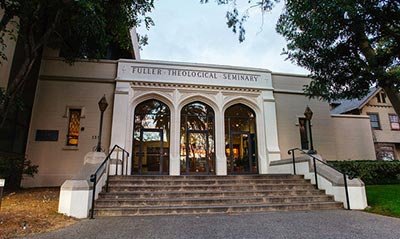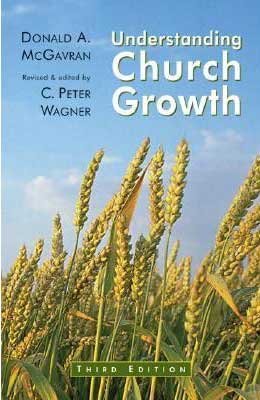The Third Wave – Introduction

Fuller Theological Seminary
1. Roots of the Third Wave Movement
“There is no question that a new and exciting era has come upon Christianity in the twentieth century. It started with the Pentecostal movement at the beginning of the century, a movement which continues to multiply under God’s blessing. It was joined by the Charismatic movement soon after mid-century. And now in these latter decades the Spirit is moving in what some of us like to call the third wave where we are seeing the miraculous works of God operating as they have been in the other movements in churches which have not been nor intend to be either Pentecostal or charismatic.” – Source: Signs & Wonders Today, C. Peter Wagner. Vida Publishers, Oct. 1986.
C. Peter Wagner and John Wimber were the fathers of what Wagner termed ‘The Third Wave Movement.’ In this article we will endeavour to examine the roots, the growth and the fruit of their work. It was certainly a fresh move of the Spirit but He chose a particular and interesting environment bring to birth this exciting movement.
This article will be presented in three parts:
1. The roots of the Third Wave Movement – The Church Growth Movement
2. C. Peter Wagner – The Third Wave Catalyst
3. John Wimber – The Third Wave Pioneer and Practitioner
4. Third Wave Teachings

Donald McGavran
1. The Roots of The Third Wave Movement
The movement called the Church Growth Movement, began in 1961 and has clearly shaped our contemporary church. That year Donald A. McGavran established the Institute for Church Growth at Northwest Christian College in Eugene, Oregon, becoming the ‘father’ of the movement.
McGavran was a third-generation missionary to India for the Disciples of Christ, who felt a call to mission work in India while studying law in the United States. While at Yale Divinity School, he studied under Kenneth Scott Latourette, well-known for documenting the spread and growth of the church throughout history. McGavran was inspired by the work of J. Wascom Pickett, as he surveyed Christian mass movements in India. Subsequently, he spent his life in clarifying the most effective ways to reach large numbers of people with the Christian gospel.
McGavran, was a third-generation missionary born in India. When he returned to India, he began by asking why some churches grow and some churches don’t grow, even if they may be in the same locality and have the same resources. He began to study how various people groups respond to the gospel and developed a discipline of collecting statistics, examining sociological issues and applying thorough analysis.
He believed that by research, analysis and statistical evidence, it was clear that the “mission station approach,” that had existed for over 150 years, was ineffective for reaching the masses. It was not sufficient for native converts to be brought into a Western environment, with western culture, western worship and western lifestyle, and expect them to flourish. It simply wasn’t working. Converts became isolated from their own people groups and grew away from their own kind, making evangelistic influence increasingly unlikely. The key was not to Westernise them but to concentrate on indigenisation – training local leaders, with local worship styles so they could win and disciple those from their own people group. McGavran’s challenge was to research existing relational networks and work within their parameters.
When implemented McGavran’s theories worked! But would they work in America and the West?
McGavran returned to the US and established the Institute for Church Growth at Northwest Christian College in 1961. Four years later he, with his colleague Alan R. Tippett, moved to Pasadena, California, where they launched the School of World Mission at Fuller Theological Seminary.
For fifteen years almost all of the leaders in this burgeoning movement were greatly influenced by the teachings and writings of McGavran and Tippett.

Understanding Church Growth
What is the Church Growth Movement?
“Church growth is that discipline which investigates the nature, function, and health of Christian churches, as they relate to the effective implementation of the Lord’s Great Commission to make disciples of all peoples (Mt. 28:19-20). It is a spiritual conviction, yet it is practical, combining the eternal principles of God’s Word with the practical insights of social and behavioural sciences.” Ed Stetzer.
‘Church growth’ is a God-designed pattern by which thousands will acknowledge Christ as Lord, and grow into full discipleship as people after people, clan after clan, tribe after tribe and community after community are claimed for and nurtured in the Christian faith.( McGavran, Bridges of God 331,332)
Distinctive aspects of the Church Growth Movement (Stetzer)
(1) an emphasis on making disciples over securing decisions;
(2) the use of sociological research to analyze data, discern receptivity, set goals, and design strategies;
(3) a recognition that context and culture—not ecclesiastical tradition—properly determine the methods employed;
(4) an acceptance of the fact that people most naturally trust and converse with others like themselves (the homogeneous unit principle);
(5) an appreciation of the indigenous church as God’s instrument for evangelizing all peoples; and
(6) an optimism based on case studies from around the world.
During the 1970s denominational leaders began to recognize the wisdom and validity of this movement as membership declined, especially in mainline denominations, as the then current ‘status quo’ was not opening the front door of the church, nor closing the back one. Over the next 20 years nearly every North American Protestant denomination was restructuring its evangelism, its new church planting emphasis, and its leadership training efforts to reflect insights and strategies gleaned from the Church Growth Movement.
Additional emphases emerging from the movement include: (Stetzer)
(1) seeing North America as a mission field;
(2) accepting cultural anthropology as a tool for Christian mission;
(3) employing computer technology across denominational lines for reaching new groups of people;
(4) assisting laity to discover and invest their spiritual gifts for ministry;
(5) training people to use their existing social networks for lifestyle evangelism;
(6) equipping leaders for the Church Growth Movement through ecumenical networks and teaching churches rather than relying solely on denominational staffs or seminary education;
(7) exploring experiences of “power encounter” and “spiritual warfare” as challenges to twentieth-century Western understandings of reality; and
(8) uniting the spiritual disciplines of fasting and prayer with strategic planning.
Others took on the baton from McGavran and further applied Church Growth princples to the Western church in their teachings and literature: Lyle Schaller, Win and Charles Arn, George Hunter, James Engel, Elmer Towns, Carl George, Bob Logan, Loren Mead, George Barna, Bill Hybels, Rick Warren and many others.
But the most influential among all of these was C. Peter Wagner.
The School of World Mission at Fuller Theological Seminary was the cradle in which the Third Wave was born. As we shall see in parts 2. and 3. of this introduction, the discipline of research to determine best church growth practices, surprisingly revealed that God was restoring the ministry and gifts of the Holy Spirit across the world.
C. Peter Wagner and John Wimber were on the faculty of Fuller’s School of World Mission and their research and experience formed the foundations of the Third Wave.



